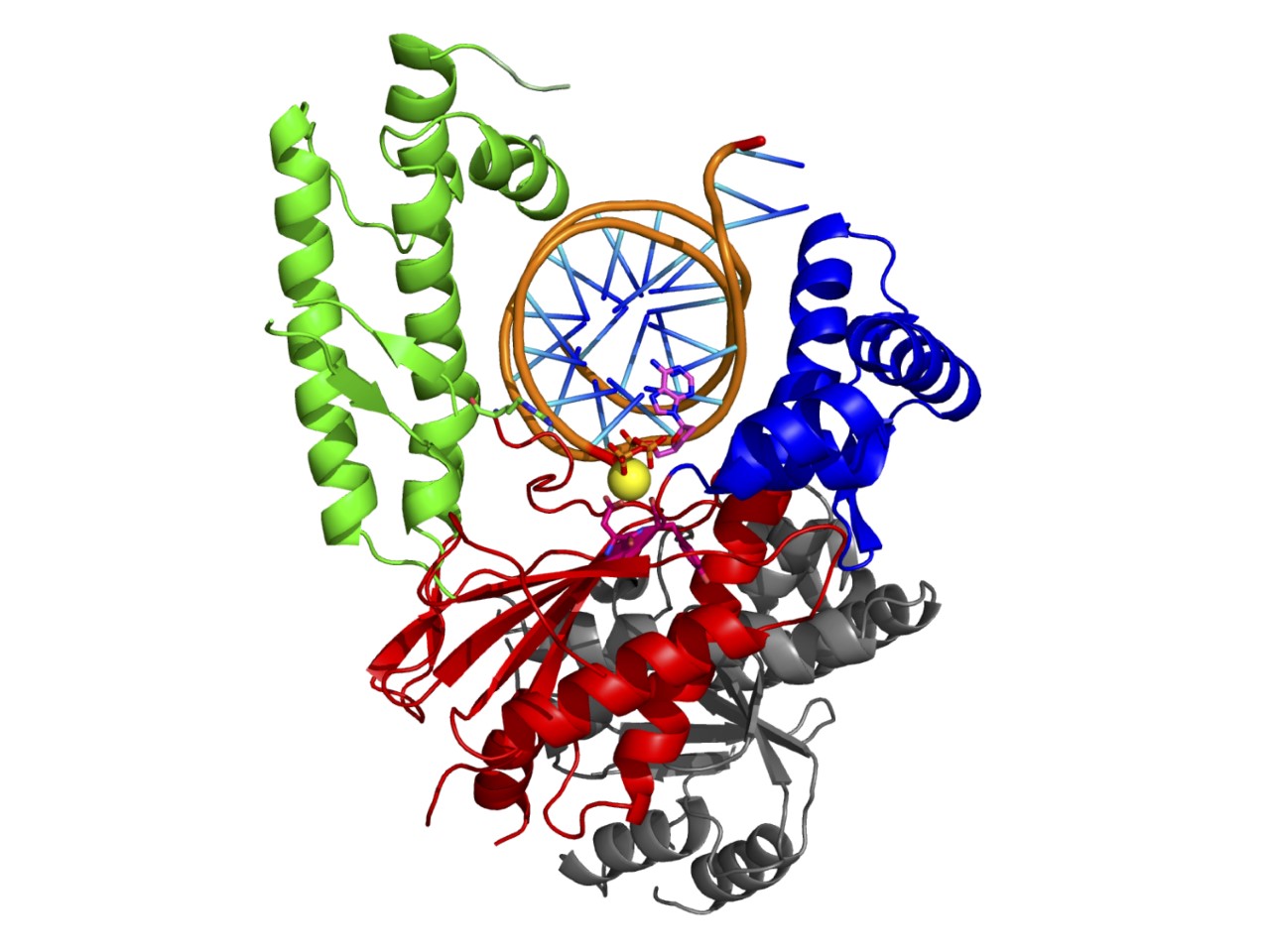Considered the most lethal form of DNA damage, double-strand breaks must be repaired to prevent cell death. In developing therapies for hard-to-treat breast and ovarian cancers in patients with BRCA gene mutations, scientists aim to identify ways to keep cancer cells from using DNA break repair pathways. New findings demonstrate a previously-unknown capability for polymerase theta (pol theta) – a key enzyme in this repair function – that shows promise as a new avenue for treatment development.
The study results are published in Molecular Cell.
Researchers at the University of Vermont (UVM), The University of Texas MD Anderson Cancer Center (MD Anderson), and Yale University discovered that pol theta, previously known to extend DNA in the repair process, is also able to behave like a nuclease and trim DNA.
Because these cancer cells rely on the pol theta pathway to survive and repair double-strand breaks, researchers have been focused on pol theta and trying to find out how to inhibit this pathway.
“Pol theta is a ‘hot’ enzyme right now,” says senior author and self-described “polymerase geek” Sylvie Doublié, Ph.D., professor of microbiology and molecular genetics at the UVM Larner College of Medicine and the UVM Cancer Center. “This is a new activity for pol theta; it’s an elegant way of solving the problem – you only need one enzyme.”
For patients with hard-to-treat cancers, this finding could lead to the development of new therapeutic options, like the Poly-ADP-ribose polymerase (PARP) inhibitors class of drugs that have been used to treat breast and ovarian cancer over the past decade.
“The cell has to decide which function needs to be applied and this trimming activity is a point of vulnerability for pol theta,” says Doublié. One aim of the research is to create conditions where one reaction can be encouraged over the other.
A potential role for such an inhibitor would be to improve ionizing radiation therapy in cancer patients with BRCA1 or BRCA2 mutations.
Doublié’s former doctoral student Karl Zahn, Ph.D., now a postdoctoral fellow at Yale, saw evidence of this dual function in pol theta several years ago while working in Doublié’s lab. He carried out the experiments described in the paper after engaging the expertise of Richard Wood, Ph.D., professor of epigenetics and molecular carcinogenesis at MD Anderson. Wood and Doublié have had a long-term collaboration, funded by a Program Project grant from the National Cancer Institute.
Conducting the experiments, controls, and reproducing the findings took the research team several years but was critical to confirming this discovery.
“It was an unexpected finding, and the biochemistry makes sense, suggesting a way to inhibit the DNA repair process orchestrated by pol theta”, says Wood.
“The trimming reaction is rapid, and many people missed it,” says Doublié, adding that the research team’s patience and work paid off. “‘Chance favors only the prepared mind,’” she says, quoting the late French scientist Louis Pasteur.
